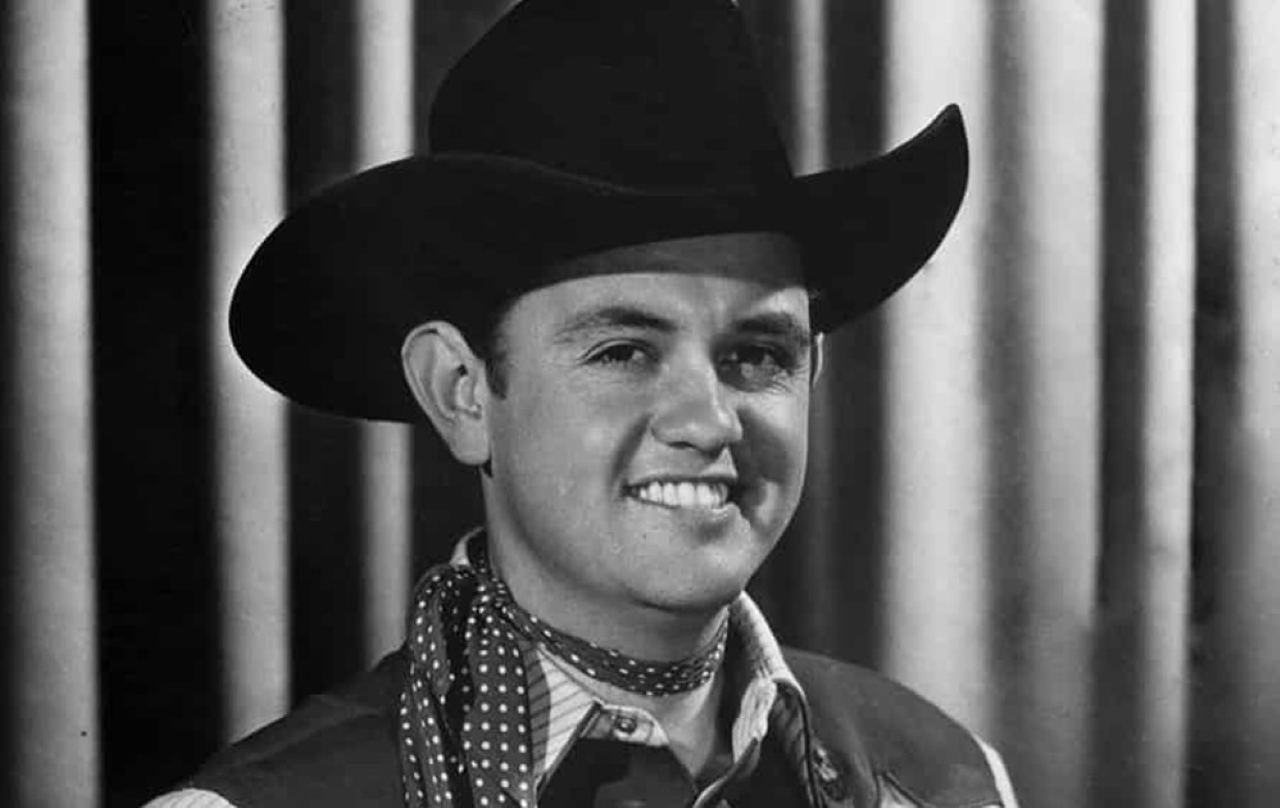🪶 A Country Boy with a Rhythm in His Hands
Merle Travis was born in Rosewood, Kentucky — coal country.
Like many kids there, he grew up poor, surrounded by the sound of trains, church choirs, and working men with calloused hands.
But Merle had something different: rhythm.
He didn’t just hear music — he felt it. When he picked up a guitar at the age of 12, it wasn’t long before his fingers began to dance across the strings in a way no one had seen before.
He played bass lines with his thumb and melodies with his fingers — two voices at once.
It was like hearing a whole band in one guitar.
That style would later be called “Travis picking”, and it would shape the sound of American country, folk, and rock for generations.

⛏️ “Sixteen Tons” and the Sound of Struggle
Before fame, Merle worked in coal mines. He saw firsthand the hardship, the endless grind, and the humor that kept working men alive.
Years later, he turned those memories into songs — storytelling wrapped in twang.
In 1946, he wrote “Sixteen Tons”, inspired by the miners of Muhlenberg County.
But it wasn’t just a song — it was a confession:
“You load sixteen tons, and what do you get?
Another day older and deeper in debt.”
It became an anthem for the working class, made famous when Tennessee Ernie Ford recorded it in 1955.
But the truth is — that rhythm, that drive, that defiant tone — came straight from Merle Travis’s heart.
🎶 Inventing a New Language for Guitar
By the late 1940s, Merle Travis had become a sensation in Nashville.
But it wasn’t just his voice or lyrics — it was his hands.
His thumb thumped steady basslines, his fingers plucked melodies and chords, all while he sang.
It was effortless, mesmerizing.
Chet Atkins, the man who would later define the “Nashville Sound,” once said:
“Merle didn’t just influence me. He taught me how to think about the guitar.”
That’s how big his impact was — even legends learned from him.
His style would echo through decades: you can hear Travis’s fingerprints in everyone from Doc Watson to Mark Knopfler, Tommy Emmanuel, and even Paul McCartney (who used Travis picking on “Blackbird”).
🌟 Hollywood, Honky Tonks, and Hard Times
By the early 1950s, Merle Travis was everywhere.
He moved to California, performed on Hollywood Barn Dance, and appeared in western films.
He wasn’t just a musician — he was a star with charm, wit, and a mischievous grin.
But fame came with a cost.
Alcohol, broken marriages, and personal demons haunted him for years. The industry loved his talent but didn’t always understand his soul.
Still, every time he stepped on stage with that Gibson guitar, the room went quiet.
The sound was pure, alive — the heartbeat of America in six strings.
🪕 A Craftsman Beyond the Stage
Merle Travis wasn’t just a musician. He was an inventor.
He designed the first solid-body electric guitar that would later inspire Leo Fender’s Telecaster.
He cared deeply about tone, wood, and precision — a true craftsman.
When asked why he spent so much time tinkering with guitars, he said:
“Because the guitar talks, if you know how to listen.”
That’s what made him different. He didn’t play at the instrument; he played with it. It was a dialogue, not a performance.
⚡ The Final Years
By the 1970s, Merle Travis had become a revered elder statesman of country music.
He was inducted into the Country Music Hall of Fame in 1977, and younger artists — from Chet Atkins to Glen Campbell — credited him as their mentor and hero.
But Merle never stopped being a simple Kentucky boy at heart.
He still wrote songs about life, love, and hard work.
He still sat on porches, laughing with old friends and picking out melodies on his worn guitar.
When he passed away on October 20, 1983, at 65, it felt like the guitar world lost its father.
But his spirit didn’t fade — it lived in every thumb and finger that struck a string in his style.
🌄 Legacy: A Thousand Fingers Still Moving
Today, if you listen closely to American music — country, folk, even pop — you’ll hear Merle Travis echoing everywhere.
Every time someone fingerpicks softly under their breath, every time a songwriter turns a life story into rhythm — that’s Merle’s ghost, smiling.
He gave the guitar a voice, one that could whisper or roar, that could cry like a miner or sing like an angel.
He turned six strings into storytelling — and for that, he became immortal.